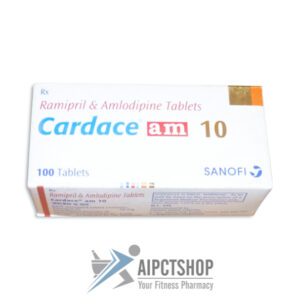Diltiazem Information
Pronunciation
dil TYE a zem
What is this drug used for?
• It is used to treat high blood pressure.
• It is used to treat a type of long-term chest pain (stable chest pain) in some people.
• It is used to treat certain types of abnormal heartbeats.
• It may be given to you for other reasons. Talk with the doctor.
Frequently reported side effects of this drug
• Headache
• Fatigue
• Loss of strength and energy
• Injection site irritation
Other side effects of this drug: Talk with your doctor right away if you have any of these signs of:
• Liver problems like dark urine, fatigue, lack of appetite, nausea, abdominal pain, light-colored stools, vomiting, or yellow skin or eyes
• Severe dizziness
• Passing out
• Slow heartbeat
• Abnormal heartbeat
• Heart problems like cough or shortness of breath that is new or worse, swelling of the ankles or legs, abnormal heartbeat, weight gain of more than five pounds in 24 hours, dizziness, or passing out
• Stevens-Johnson syndrome/toxic epidermal necrolysis like red, swollen, blistered, or peeling skin (with or without fever); red or irritated eyes; or sores in mouth, throat, nose, or eyes
• Signs of a significant reaction like wheezing; chest tightness; fever; itching; bad cough; blue skin color; seizures; or swelling of face, lips, tongue, or throat.
Medication Safety Issues
Sound-alike/look-alike issues:
Cardizem may be confused with Cardene, Cardene SR, Cardizem CD, Cardizem SR, cortisone
Cartia XT may be confused with Procardia XL
DilTIAZem may be confused with Calan, diazePAM, Dilantin
Tiazac may be confused with Tigan, Tiazac XC [CAN], Ziac
High alert medication:
The Institute for Safe Medication Practices (ISMP) includes this medication (IV formulation) among its list of drug classes which have a heightened risk of causing significant patient harm when used in error.
Administration issues:
Significant differences exist between oral and IV dosing. Use caution when converting from one route of administration to another.
International issues:
Cardizem [US, Canada, and multiple international markets] may be confused with Cardem brand name for celiprolol [Spain]
Cartia XT [US] may be confused with Cartia brand name for aspirin [multiple international markets]
Dipen [Greece] may be confused with Depen brand name for penicillamine [US]; Depin brand name for nifedipine [India]; Depon brand name for acetaminophen [Greece]
Tiazac: Brand name for dilTIAZem [US, Canada], but also the brand name for pioglitazone [Chile]
Storage and Stability
Capsule, tablet: Store at 25°C (77°F); excursions permitted to 15°C to 30°C (59°F to 86°F). Protect from light. Avoid excessive heat (>30°C) and humidity.
Solution for injection: Store in refrigerator at 2°C to 8°C (36°F to 46°F); do not freeze. May be stored at room temperature for up to 1 month. Following dilution to ≤1 mg/mL with D51/2NS, D5W, or NS, solution is stable for 24 hours at room temperature (15°C to 30°C (59°F to 86°F) or under refrigeration).
Solution reconstituted, intravenous (ADD-Vantage): Store at 20°C to 25°C (68°F to 77°F); do not freeze. Following reconstitution, solution is stable for 24 hours at room temperature or under refrigeration (2°C to 8°C [36°F to 46°F]).
Adverse Reactions
Cardiovascular: Angina pectoris, bradycardia, bundle branch block, cardiac arrhythmia, cardiac failure, complete atrioventricular block, ECG abnormality, edema, extrasystoles, first-degree atrioventricular block, hypotension, lower extremity edema, palpitations, peripheral edema, second degree atrioventricular block, syncope, tachycardia, vasodilation, ventricular premature contractions
Central nervous system: Abnormal dreams, abnormal gait, amnesia, depression, dizziness, drowsiness, fatigue, hallucination, headache, insomnia, nervousness, pain, paresthesia, personality changes
Dermatologic: Pruritus, skin photosensitivity, skin rash
Endocrine & metabolic: Albuminuria, gout, gynecomastia, hyperglycemia, hyperuricemia, increased lactate dehydrogenase, increased thirst, weight gain
Gastrointestinal: Abdominal enlargement, anorexia, constipation, diarrhea, dysgeusia, dyspepsia, nausea, vomiting, xerostomia
Genitourinary: Crystalluria, impotence, nocturia, sexual difficulty
Hematologic & oncologic: Petechia
Hepatic: Hepatic injury, increased serum alanine aminotransferase, increased serum alkaline phosphatase, increased serum aspartate transaminase, increased serum bilirubin
Hypersensitivity: Hypersensitivity reaction
Infection: Infection
Local: Burning sensation at injection site, itching at injection site
Neuromuscular & skeletal: Asthenia, increased creatine phosphokinase in blood specimen, muscle cramps, myalgia, neck stiffness, osteoarthritis, tremor
Ophthalmic: Amblyopia, conjunctivitis, eye irritation
Otic: Tinnitus
Renal: Polyuria
Respiratory: Bronchitis, cough, dyspnea, epistaxis, flu-like symptoms, paranasal sinus congestion, pharyngitis, rhinitis
Rare: Atrial flutter, chest pain, sinus node dysfunction, urticaria, ventricular fibrillation, ventricular tachycardia
Postmarketing: Acute generalized exanthematous pustulosis, alopecia, angioedema, asystole, cutaneous lupus erythematosus (Crowson 1995; Srivastava 2003), erythema multiforme, exfoliative dermatitis, extrapyramidal reaction, gingival hyperplasia, hemolytic anemia, hypersensitivity angiitis, leukopenia, myopathy, prolonged bleeding time, purpuric disease, retinopathy, Stevens-Johnson syndrome, thrombocytopenia, toxic epidermal necrolysis –








